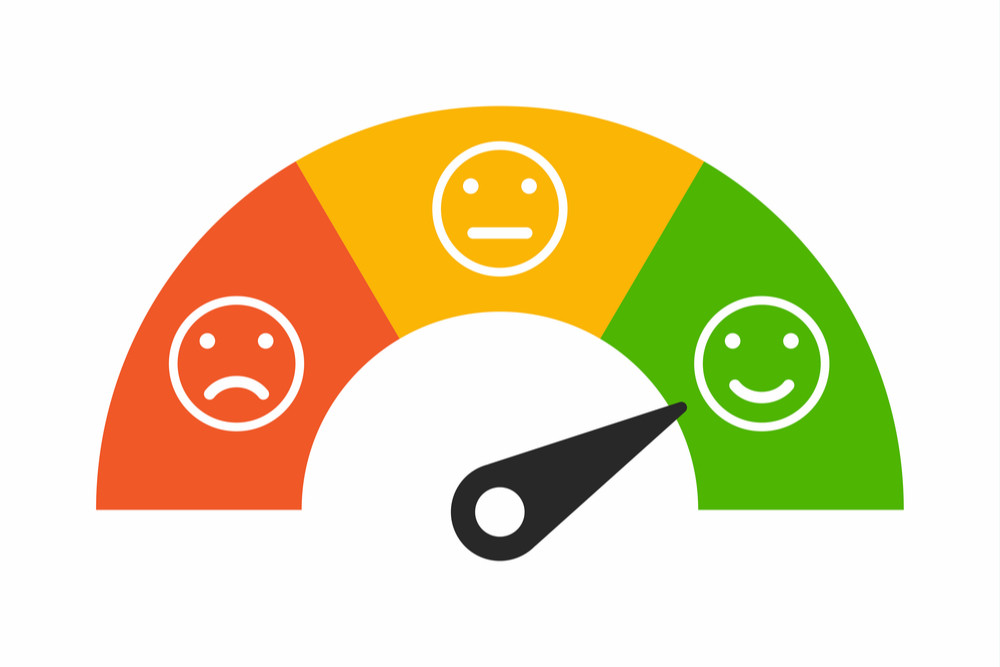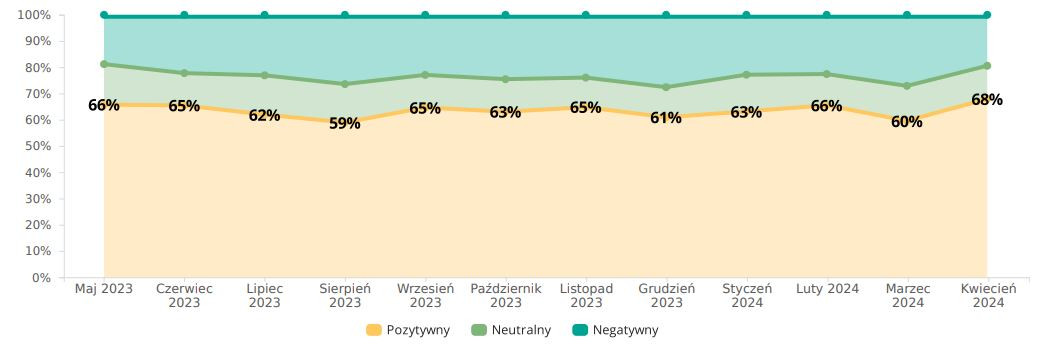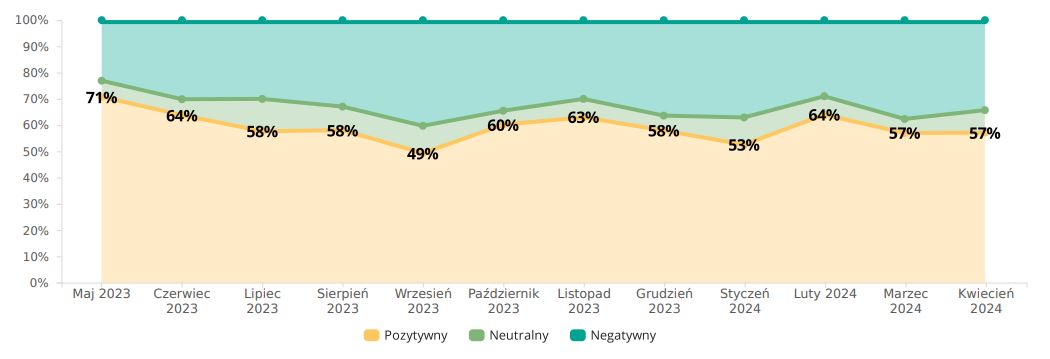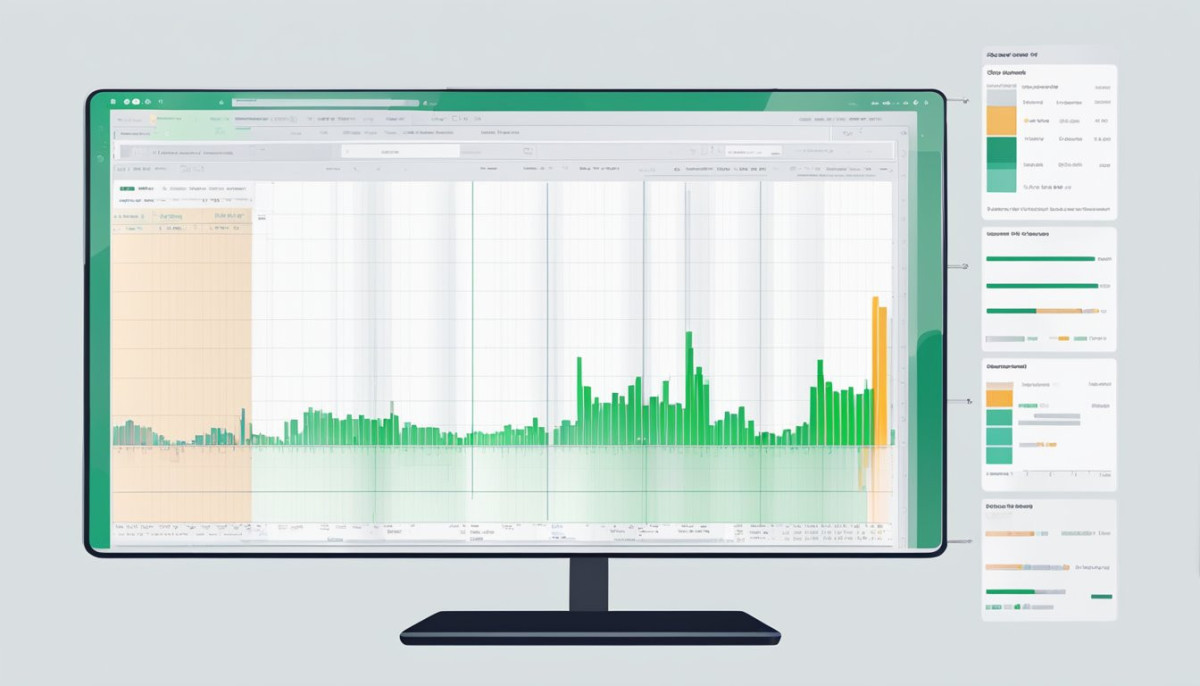- Research platform
Sources of information
Data analysis
Actions
- Solutions
For whom
Problems / Issues
- Materials
Materials
- About us
About us
Sentiment and emotion analysis are extremely important tools in the field of natural language processing (NLP). They make it possible to identify and classify the emotions contained in a text to understand the overall mood expressed by the author. Using advanced artificial intelligence techniques, they can accurately extract from content not only information about positive or negative sentiment, but also about the intensity of individual emotions.

Sentiment analysis is the process of using technology to understand and categorize the sentiment contained in textual data.
Sentiment analysis is the process of analyzing text to determine whether the emotional tone of a message is positive, negative or neutral, and possibly the strength of that tone. Today, companies have large amounts of textual data, such as emails, transcripts of customer service chats, comments on social networks or reviews. Sentiment analysis tools can scan this text to automatically determine the author's attitude toward a topic. Companies are using insights from sentiment analysis to improve customer service and enhance brand reputation.

In the process of emotion analysis, it is crucial to understand what feelings users express in their statements and to identify their different emotional states. This is an area particularly useful in market research and customer service. Emotions are complex psychological reactions characterized by specific feeling states. They are often classified using Plutchik's basic model of emotions, which include eight main categories: joy, sadness, anger, fear, trust, expectation, surprise and disgust.

Techniques for identifying and recognizing emotions include both quantitative and qualitative methods. Among the most popular is text analysis, which uses keywords and context to identify emotions. Today's emotion analysis tools use machine learning and artificial intelligence algorithms to recognize subtle nuances in the expression of feelings. These tools can identify a wide range of emotions, and the more advanced ones can even identify them in different languages (for example, for Polish, English or Ukrainian).
Breadth versus depth: Sentiment analysis often only provides information on whether something is positive or negative, which can be considered a superficial interpretation. Emotion analysis, on the other hand, offers a deeper, more detailed look at underlying emotional states, providing insights into the spectrum of human emotions.
Data requirements: Emotion analysis typically requires more detailed and contextually rich data to train algorithms, as it must capture a wider range of emotional signals compared to sentiment analysis.
Use cases: While both are used to assess reactions and feelings based on textual data, a specific application can significantly affect whether sentiment analysis or emotion analysis is more appropriate. For example, sentiment analysis can be used to understand customer satisfaction levels, while customer service interaction analysis can use emotion analysis more often to understand the nuances of customer emotions during contact. It's worthwhile to immediately supplement both analyses with analysis of speech categories.
In summary, while sentiment analysis provides a general measure of how people feel about a topic, emotion analysis delves deeper into the specific emotional content of communications, offering a more detailed understanding of the emotional landscape.

Sentiment analysis, also known as opinion mining, is an important business analytics tool that helps companies improve their products and services.
Itprovides objective insight - companies can avoid personal biases associated with customer reviews by using popular sentiment analysis tools based on artificial intelligence. As a result, companies get consistent and objective results when analyzing customer reviews.
Creating better products and services - Sentiment analysis systems help companies improve their products and services based on specific customer reviews. Artificial intelligence technologies identify real objects or situations (called entities) that customers associate with negative sentiment.
Analyzing at scale - Companies are constantly extracting information from vast amounts of unstructured data, such as emails, voice call transcripts, bot conversations, surveys, message board posts and product reviews. Sentiment analysis tools, such as a component of the YourCX platform, allow companies to scale the process of discovering customer emotions in text data at an affordable cost.
Real-time results - Companies need to respond quickly to potential crises or market trends. Marketers rely on sentiment analysis software to learn what customers think about a company's brand, products and services in real time and take immediate action based on their findings. They can configure the tool to send alerts when negative sentiment is detected for specific keywords. This allows them to reach out to customers who are still on the lookout for an immediate solution to their problem.
Sentiment analysis is the use of natural language processing (NLP) technologies that train large language models to understand text in a human-like manner. The analysis usually goes through several stages before delivering the final result.
In the pre-processing stage of emotion analysis, key words are identified to understand the main message of an utterance.
Tokenization divides the sentence into several elements or tokens.
Lematization transforms words into their root form. For example, the root form of the word "is" to "be."
Removing stop words, that is, words that do not add significant value to the sentence. For example, with, for and at are stop words.
NLP technologies further analyze the extracted keywords and give them an initial sentiment of the utterance and a sentiment score. The sentiment score is a measurement scale that indicates the emotional element in the sentiment analysis system. It provides a relative perception of the emotions expressed in the text for analysis purposes. For example, researchers use 10 to represent satisfaction and 0 for disappointment when analyzing customer feedback.
There are three main approaches used by sentiment analysis software.
The rule-based approach identifies, classifies and evaluates specific keywords based on predetermined lexicons. Lexicons are compilations of words representing the author's intentions, emotions and mood. Marketers assign sentiment scores to positive and negative lexicons to reflect the emotional weight of various phrases. To determine whether a phrase is positive, negative or neutral, the software scans the words listed in the lexicon and adds up the sentiment score. The final score is compared with the sentiment boundaries to determine the overall emotional overtones.
This approach uses machine learning (ML) techniques and sentiment classification algorithms, such as neural networks and deep learning, to teach computer software to identify emotional sentiment from text. The process involves creating a sentiment analysis model and repeatedly training it on known data so that it can guess the sentiment in unknown data with high accuracy.
Hybrid sentiment analysis works by combining both ML and rule-based systems. It uses the features of both methods to optimize speed and accuracy when obtaining contextual intent in text. However, combining the two different systems takes time, advanced technology and research expertise.
The YourCX platform uses large-scale language models and machine learning techniques to determine sentiment and emotion.
Accuracy measurement is a key element in the sentiment and emotion analysis process, ensuring the reliability of the results. Validation, especially cross-validation, is important to avoid model overfitting.
Sentiment analysis uses various metrics to assess the accuracy of classification models. The most commonly used are:
Accuracy: Percentage of correctly classified examples relative to all examples.
Precision: Percentage of correct positive predictions relative to all positive predictions.
Recall (Completeness): Percentage of correctly detected positive cases out of all actual positive cases.
F1 Score: Harmonic average of precision and completeness shown below.

These methods make it possible to compare the effectiveness of algorithms under different conditions and select the most suitable one for a given application.
Cross-validation is a technique used to assess how well a model will generalize on an unknown data set. It is divided into several steps:
Dividing the data into k equal parts.
Using k-1 parts of the data as a training set and 1 part as a test set.
Repeating the process k times, each time with a different part as the test set.
Cross-validation provides a more stable model evaluation than a single division of the dataset, reducing the risk of overfitting and increasing the reliability of the results.
Companies are using sentiment analysis to extract information and create action plans in various areas.
Improving efficiency in customer service
Customer service teams use sentiment analysis tools to personalize responses based on the mood of the conversation. Urgent issues are detected by AI-based chatbots with sentiment analysis capabilities and escalated to staff support.

Brand monitoring
Organizations are constantly monitoring mentions and conversations and consumer attitudes about their brands in social media, discussion forums, blogs, news articles and other digital spaces. Sentiment analysis technologies allow the public relations team to be aware of related current stories. The team can assess the underlying sentiment to respond to complaints or capitalize on positive trends.
Market research
A sentiment analysis system helps companies improve their product offerings by learning what works and what doesn't. Marketers can analyze comments on online review sites, survey responses and social media posts to gain deeper insights into specific product features held in their offerings. They provide reliable results to product engineers who innovate accordingly.
Tracking campaign performance
Marketers use sentiment analysis tools to make sure their advertising campaign is generating the expected response. They track conversations on social media platforms and make sure that overall sentiment is encouraging. If the average sentiment (an indicator showing the aggregate sentiment of Internet users - the value for positive statements is subtracted from the value for negative statements) does not meet expectations, marketers adjust the campaign based on real-time data analysis.
The key in sentiment analysis is the appropriate use of tools and technology, as well as the ability to interpret the collected data. Effective use of sentiment and emotion analysis can lead to significant benefits for organizations.
Despite advances in natural language processing (NLP) technologies, understanding human language and its meaning is a challenge for machines (especially since we speak different languages). They can misinterpret the finer nuances of human communication:
Sarcasm and irony - it is extremely difficult for tools to analyze the sentiment in sentences containing sarcasm. Consider the following sentence: "Great. My order didn't arrive until three weeks later." Unless the computer analyzes this sentence with a full understanding of the scenario, it will mark the experience as positive based on the word "super."
Negation - the use of negative words to reverse the meaning in a sentence. For example:"I wouldn't say the subscription was expensive." Sentiment analysis algorithms can have difficulty correctly interpreting such sentences, especially if the negation occurs in two sentences, such as: "I thought the subscription was cheap. It wasn't."
Multipolarity - occurs when a sentence contains more than one sentiment. For example, a product review reads,"I'm satisfied with the solid construction, but I'm not impressed with the color." The software has difficulty interpreting the sentiment. You have to use aspect-based sentiment analysis to isolate each individual with specific emotions.
Short texts and lack of context: on platforms such as Twitter, where text is very short, there is often not enough context to accurately determine sentiment. A short phrase or a standalone word may not provide enough information to correctly determine the sentiment.
Domain-specific language - different industries or domains may use the same words in different ways, which can confuse sentiment analysis models that are not tailored to those domains. For example, the word "heavy." In a medical context, the word "severe" may be used to describe a serious health condition or illness, which carries a negative connotation. However, in the music industry, the same word can be used in a positive sense to describe a song or concert that was emotional and full of depth (e.g. "heavy riff" in rock or metal music).

Sentiment and emotion analysis is constantly evolving, adapting to changing technologies and the growing demands of users and the increasing importance of social media.
Advanced algorithms and deep learning - Artificial intelligence (AI) technologies and machine learning algorithms are becoming the foundation for natural language processing (NLP), which translates into once more advanced sentiment analysis methods. Increasingly sophisticated models such as neural networks (deep learning) are being used to analyze sentiment and emotion. Transformer-based models such as BERT (Bidirectional Encoder Representations from Transformers) and GPT (Generative Pre-trained Transformer) are revolutionizing the ability to understand the subtle nuances of natural language.
Emotions in a cultural context - understanding how different cultures express emotions is crucial for global companies. Analysis of emotions becomes more complex and nuanced, taking into account cultural differences in the expression of feelings. Not only texts are analyzed, but also voice modulation and facial expressions
Multilingualism and localization - the globalization of business is forcing the development of systems capable of analyzing text in multiple languages. This is a challenge because different languages can express sentiments and emotions in very different ways. There is a growing need for models that can work effectively with diverse data sets and cultural specificities.
Interdisciplinarity - The field is beginning to draw on knowledge from psychology, anthropology and other humanities to better understand how people express and experience emotions. These interdisciplinary approaches can lead to new methods of analyzing and interpreting affective data.
In a market context, sentiment analysis provides insight into consumer opinions. In contrast, the trends described point to the ongoing development and application of modern algorithms to gain a deeper understanding of the impact of sentiment and emotion on consumer decisions.
Copyright © 2023. YourCX. All rights reserved — Design by Proformat